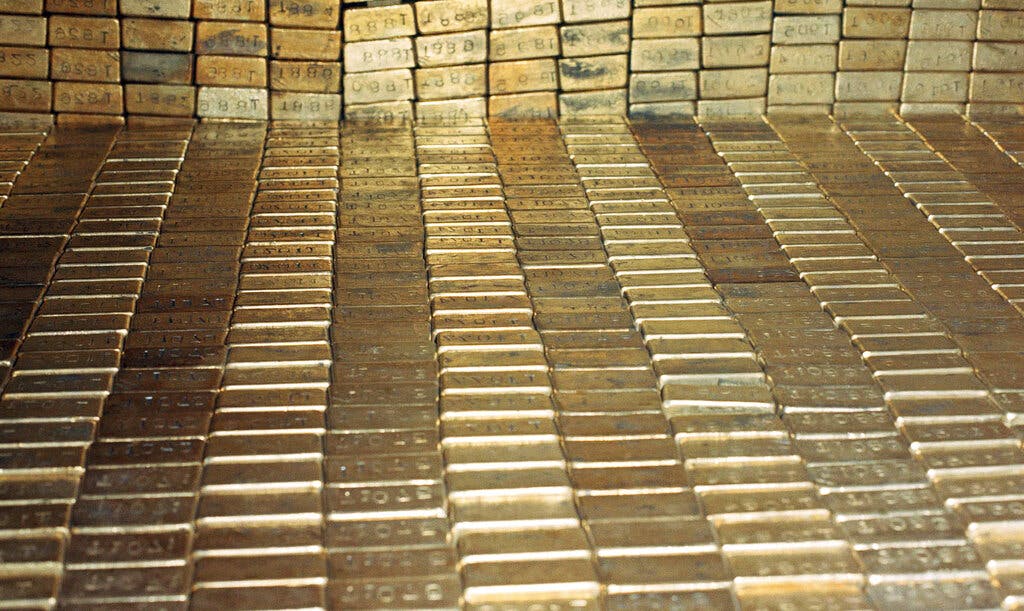Paul Krugman’s ‘Pet Rock’
Amid a ‘Crypto winter’ and newfangled monetary experiments, like Bitcoin, Mr. Krugman is mystified by ‘the recent resilience of good, old-fashioned gold.’

Is gold the new Bitcoin? That’s the poser from Nobel Laureate Paul Krugman. It’s not meant as a compliment to the basis of monetary value. Amid a “Crypto winter” and newfangled monetary experiments, like Bitcoin, Mr. Krugman is mystified by “the recent resilience of good, old-fashioned gold.” He likely hasn’t been reading the Sun, which he once called “a marginal publication, with strong gold-bug tendencies.”
Yet Mr. Krugman shows signs of catching on. “Gold should be considered an interesting story,” writes he, noting that “Bitcoin has lost more than two-thirds of its value since its peak in late 2021,” but gold “has hung in there” and is now priced a “few percentage points off its 2020 peak.” This defies earlier predictions that Bitcoin and other digital currencies “might take on some of gold’s historic role.”
This has failed to happen, and the only explanation the hapless Mr. Krugman can find is that “investors are losing faith in fashionable technobabble,” leading them to trade a useless “pet rock” — as Jamie Dimon calls Bitcoin — for another. These “financial barbarians,” Mr. Krugman condescends, seek a “return to pet rocks with centuries of tradition behind them.” He mocks gold as “the pet rock of ages.”
This isn’t the first time Mr. Krugman has had trouble grasping “the idea that gold is money.” As far back as 1996, when he was a columnist for Slate, Mr. Krugman was expressing perplexity with the “latter-day Midases” who still favored a gold standard. He averred that “gold is not a stable standard when measured in terms of other goods and services.” Never mind that the lack of stability might be in the goods and services.
Instead Mr. Krugman dismissed gold as “a commodity whose price is constantly buffeted by shifts in supply and demand.” This appears to be a misunderstanding of which Mr. Krugman would be disabused if he read more widely. That’s because he has the relationship between money and gold backwards. It’s the gold that serves as the basis for monetary value and the value of currencies, not the other way around.
As far as stability is concerned, too, feature that gold, in its American heyday between 1879 and 1913, held the annual rate of inflation to an average of 0.1 percent a year. In the long run between Alexander Hamilton’s Coinage Act of 1792 and the creation of the Federal Reserve, a gold standard kept the average pace of price increases to 0.2 percent. Today amid the age of fiat currency, price inflation is running at 6 percent.
Mr. Krugman, with the detachment of an anthropologist studying some remote tribe, calls it “fascinating” to see “gold as the appropriate measure of wealth, regardless of the quantity of other goods and services that it can buy.” That is how he describes the views of the late political economist Jude Wanniski, who noted that in any discussion of money, it was essential to “get our accounting unit squared away.”
That’s because, Wanniski explained, to “measure anything in the floating paper dollar will get us nowhere.” He understood that to get down to the real value of property, investments, or even crypto-currencies, “we must convert all wealth into the measure employed by mankind” for millennia — “ounces of gold.” Back when Mr. Krugman was weighing such “fascinating” views, the value of the dollar was about a 380th of an ounce of gold.
Today, the dollar’s value has plummeted to less than a 1,900th of a gold ounce, signaling the debasement of the fiat greenback and the spiraling inflation triggered by the Fed and Congressional overspending. Mr. Krugman is confused by the “substantial demand for gold” today when, he frets, it hasn’t “served any monetary purpose for a very long time.” He fails to see that these “pet rocks” do serve a “monetary purpose” — they are the money.

